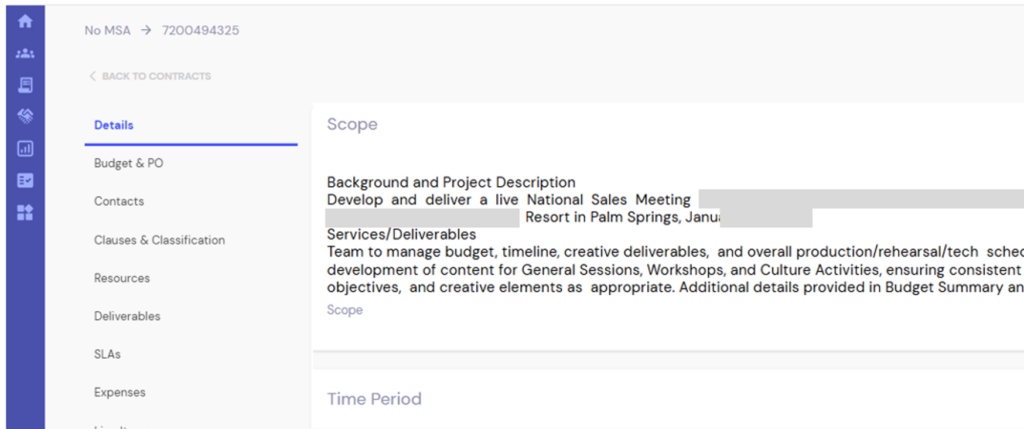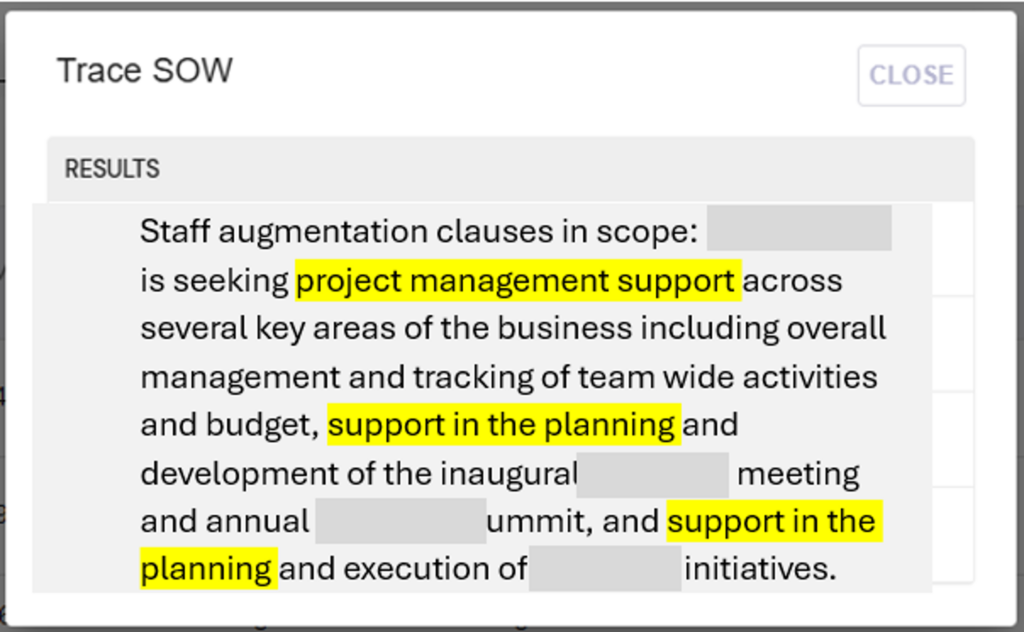Don’t Miss the Boat with a Skimpy Scope

Why are we here? What is this project about? These simple questions should be easily answered, but at Brightfield we find that over 30% of SOW scope sections do not adequately cover the basics. Instead, scopes are vague or missing entirely, meaning there is no backstop for any supplier accountability whatsoever.
Define your engagement with a quality SCOPE section
An SOW scope should encapsulate the project and present what the buyer expects from the seller. While it isn’t as detailed as a deliverable or term, a well-written scope provides boundaries that contain the rest of the agreement and reflects a mutual clarity of purpose. Here are good examples of scope drawn from actual SOWs:
Example 1: [supplier] will create 2 strategic reports that will provide insight into regionally specific [activity] in [target segment].
Example 2: Develop and deliver a National Sales Meeting for [product line]. The meeting will be held at [location] on [date].

Scopes Define Completion (Beyond Clock and Calendar)
Scopes should give a high-level picture of the end goal. For examples 1 and 2, it’s clear that the outcomes are strategic reports and a sales meeting. That’s how we’ll know the project is complete.
Completion should include more than the passage of time. (We all get that for free.) This tip may seem obvious, but Brightfield’s TDX has identified tens of thousands of SOWs where completion is defined primarily by the clock or the calendar. Here’s an example:
Example 3: Supplier will provide services on a fixed monthly rate for approximately 12 months beginning from Jul 1, 2024 to Jun 30, 2025, in order to provide HR solution services to fulfill the objective of providing Operations PM who shall provide the onsite service…
It’s not that time or schedule shouldn’t appear in a scope section; but they should be a qualifier rather than the central point. After all, a statement of work should state work. A “project” in which completion is measured entirely in time sounds more like a gig, and it may be better suited to staffing than services procurement (as illustrated in Example 3 above).
Good Scopes Say Yes and No
Examples 1 and 2 state what is included in the scope of the SOW. The clarity and simplicity also reveal what is excluded. If we looked at example 2 and asked: “will the supplier provide marketing guidance?” the answer would clearly be negative.
When engagements are complex, it can be challenging to set limits. Most consulting firms have no interest in limiting their reach, and we often see scope sections with vague boundaries.
Example 4: [COMPANY BUSINESS UNIT] is seeking project management support across several key areas of the business including overall management and tracking of team wide activities and budget, support in the planning and development of the inaugural [TOPIC 1] meeting and annual [TOPIC 2] Summit, and support in the planning and execution of [TOPIC 3] initiatives.
Getting Technology to Help
The scope in example 4 was flagged by TDX analysis, which called out the following terms as indicators of staff augmentation:
- “project management”
- “including overall management”
- “support” (twice)

It’s hard to hold a supplier accountable with general verbs such as support or assist. And when a scope is said to “include” certain specified activities… does that mean there may be other activities as well which are not specified?
Checking your Scope
Brightfield clients leverage TDX to evaluate scopes of active SOWs as well as draft SOWs so language can be improved before signature. If you don’t have TDX, you can ask a few questions to validate your scope:
- Can I tell from the scope what we want from the supplier?
- Is completion defined apart from time?
- Is the language specific enough that I can easily tell what would be excluded?
Find Savings fast.

Jack Quarles is the Head of Advisory, Services Procurement at Brightfield where he helps elite companies reduce risk and capture tens of millions of dollars in savings in their SOW programs. Jack has two decades of experience in sourcing as a practitioner and thought leader and authored the bestselling books Expensive Sentences and Same Side Selling.